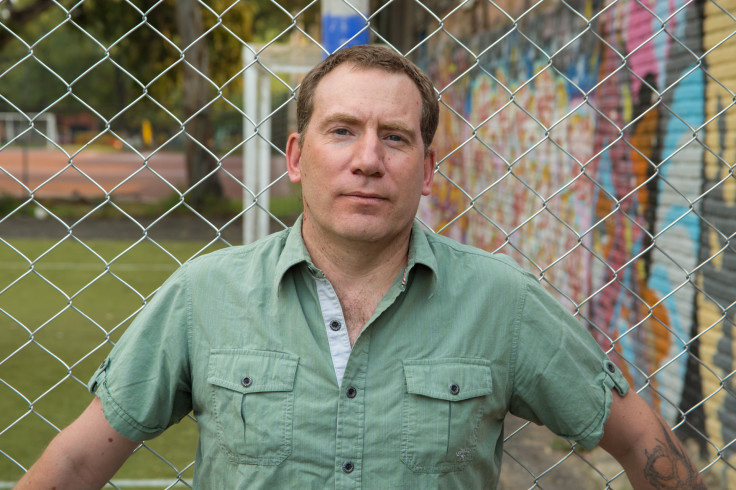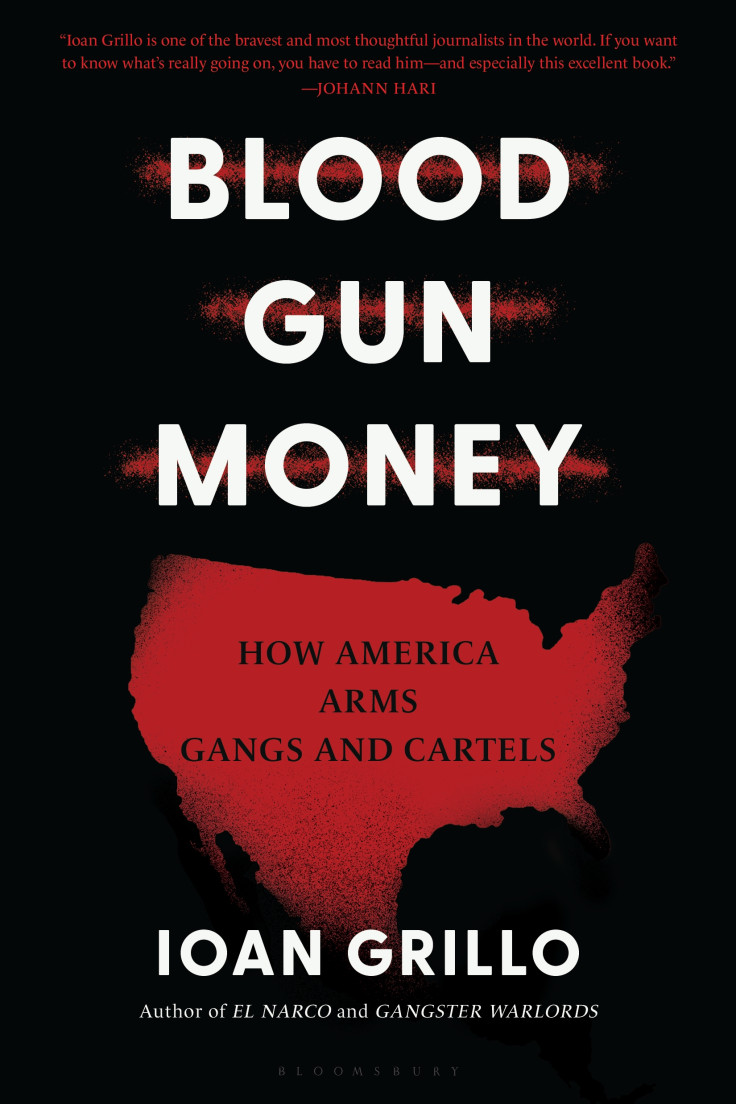
English journalist Ioan Grillo has been based out of Mexico City for over 20 years, reporting on topics such as cartels, drug and human trafficking, firearm smuggling and immigration.
The Latin Times spoke with Grillo about his journalistic work and his insight into the Mexican criminal network, as well as getting into to places most can't.
Grillo was graphic when describing some of the most extreme situations he's been through: "There's shootouts, and I've been in several occasions where's there's been firefights. You've got no immunity to bullets there. And you think, 'Well, they're not gonna kill a foreigner because there's gonna be more heat on them,' Which is true, but sometimes you've got a 15-year-old kid with an AK-47 who's taking meth. It's like, are you gonna be sure that guy's going to think through the consequences of their actions?" Grillo said. "So obviously, you gotta be careful and know there are big risks in this, and every time you write a story, every time you go and do reporting, it's something on your mind that you're thinking about."
Grillo moved to Mexico in 2000 when he was 27. It wasn't until 2001 that he got a full-time job reporting in the country and in 2004 his focus shifted to cartels and drugs.
Mexico's Rise in Murder Following U.S. Assault Rifle Sales
Grillo recalled that murders in Mexico started to increase in 2004, rates going from 8.97 per 100,000 to 16.85 per 100,000 in 2014, and in 2021 the rate was 28.18 per 100,000.
But before that year, he said, there was a period when people started seeing hope of a less violent country. In 1994, Mexico's murder rate was 17.93 per 100,000. That year, the "Public Safety and Recreational Firearms Use Protection Act" was passed, banning assault rifles. Ten years later, the rate decreased to 8.97 per 100,000 in 2004. After that, things started to change.
"What we see in this time is this massive escalation of violence, which is also the year that the Assault Rifle ban expired. That made it much easier to buy large quantities of AK-47s and AR-15s in the United States and bring them to Mexico," Grillo said. "What we saw in Mexico around this time was a change in the violence and the crime, from the kind of old school gang banger guys with shaved heads and tattoos often fighting with pistols or knives, into what some of us call paramilitary organized crime."
Grillo said that of all the murders in Mexico, about two-thirds are related to cartels, and about 70% of involved firearms manufactured in the U.S.
Grillo said for years, he knew that guns were smuggled from the U.S. to Mexico, but it wasn't until 2017 when he met an imprisoned man in Ciudad Juarez, he understood how so many guns were making it into Mexico. Newfound insight into the source of cartel firearms, Grillo said, inspired him to write his book, "Blood Gun Money," an investigative dive into how U.S. guns get into Mexico.
"He explained to me how he was buying about a dozen guns every weekend, mainly AR-15s at gun shows in the Dallas area and taking them into Mexico, and often buying them with no paperwork whatsoever," Grillo said. Following the revelation, Grillo said he went undercover, going to gun shows and finding people selling brand-new guns without any requirement of identification or paperwork. He described this as an abuse of the private sale loophole.

Grillo described how the switch in violence attributed to U.S. firearms making its way into Mexico led cartels to become "paramilitary" groups with metal helmets, assault rifles, bulletproof jackets and radios.
Grillo described how the evolution of cartels led to advancements in the types of crime they commit, such as crude oil theft, piracy, extortion, human smuggling and kidnapping.
"One thing about being victims of violence, and [is that] many of the victims of violence had nothing to do with the cartels," Grillo said. "Many of these are just regular people who are often caught up in it."
Drug Trafficking and Fentanyl in Mexico
Over the years, Grillo said he's seen drug trafficking change in Mexico. He said marijuana used to be one of the primary drugs sent to the U.S. from the country, but since its legalization in many states that isn't seen as much. Grillo thought U.S. marijuana legalization would help end cartels, but it hasn't. What he's seen change is a spike in American deaths from fentanyl.
Grillo said he doesn't know when the fentanyl crisis could end or if it can end. He compares it to the crack epidemic, but at the same time, he said crack at its worst killed less than 10,000 people a year from overdoses, while fentanyl is killing over 100,000. Another grim ending Grillo said he thinks about is whether, because of fentanyl's deadly nature, all people addicted to fentanyl will eventually die out.
"When I was young, and I grew up in a community with quite a lot of heroin use, you saw teenagers and young men that died of heroin overdoses, and heroin seemed like the scary thing, but now it's like 'oh heroin the good old days. I wish it was back in those days,' Grillo said. "This stuff is scary. Young people are going around and taking a pill at a party, and you could die quickly from it."
Cartels Don't Sell Fentanyl in Mexico
Grillo said he was recently working on a television show about Mexican singer Chalino Sanchez, and while spending time in Sinaloa, he spoke to local dealers who said they're not allowed to sell fentanyl locally. He said the cartel saw how deadly fentanyl was and did not want local people taking it.
"It sounds kind of funny, like a socially conscious gangster, but they don't want their own employees taking this stuff and dying," Grillo said. "They have families because this is their area. Their kids go to school there, so they're concerned at least about that, but they're [still] trafficking it to the United States."
Despite fentanyl not being widely available throughout Mexico, Grillo said there is no ban in Tijuana and it's is sold there. He attributes this to people who go to the U.S., become fentanyl dependent, and then are deported to Mexico. He said this is also true in nearby cities such as Mexicali and the entire Baja, California area.
Grillo said he doesn't know for how long fentanyl will not be sold throughout Mexico because, in the past, there have been similar kinds of drug sale bans. In the 1980s, he recalled, cocaine was not sold for a while in Mexico, but that didn't last much. The same was true for Methamphetamine.
What's Grillo Working on Now?
Grillo said right now, people could find his new work on his substack, where he uploads some work every week, whether it be an essay, story, history lesson or analysis. He also has his three books, which people can find on his website.
Nowadays, he said he's working on his book, which is under wraps. However, his daily stories still focus mainly on organized crime and drugs in Mexico and the U.S. He's currently working on a story about the CIA, magic mushrooms and Mexico, among other topics.
© 2025 Latin Times. All rights reserved. Do not reproduce without permission.





